

Inahcamp - INAH Campeche - 3B871DCF-87DF-4362-A24A-956E235E2FB9. Mexicolore sur Twitter : "Our team vote this the best retelling of the full Hero Twins story, inspired by the discovery of the journal of Armando Hernán de Antigua who in 1864 wrote down the story of #Hunahpu and #Xbalanque, as told to him by a #Quiché #M. Murals from the ancient Maya city of Calakmul showing various market place scenes.… Chocolate, Food of the Gods, in Maya Art. Who doesn’t love chocolate?

To celebrate “National Chocolate Day,” which is tomorrow, October 28, I want to recognize the importance of chocolate—also known as cacao—in the ancient Maya civilization. The ancient Maya consumed chocolate as a drink, which was sometimes mixed with substances such as corn and flavored with spices and flowers, and as a sauce on corn tamales and other foods. Chocolate was so valuable to them that they produced many fine ceramic vessels with painted images and inscriptions naming them as vessels for drinking chocolate, which they buried in elite tombs. There also was a cacao god. Theobroma cacao is the modern scientific name for chocolate, and it is indeed fitting, for theobroma means “food of the gods.”
David S. Anderson sur Twitter : "What's that delicious frothy drink on the bench beside this Maya ruler? Why its chocolate of course! Theobroma cacao is native to the Americas and was consumed in the form of a spicy beverage by the Maya elite long before. Featured Site: Piedras Negras, Guatemala – Mesoamerican Studies Online. Along the banks of the Usumacinta River, just beyond the Mexico-Guatemala border, is a Maya site in ruins known today as Piedras Negras.
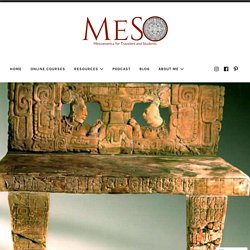
However, a thousand years ago, locals would have called it “Yokib”, a Maya name that possibly means “entrance”. Yokib was a strong city during the Classic Period, frequently at war with its neighbor Yaxchilan. Piedras Negras is often overlooked by tour companies due to the difficulty- and sometimes the danger- of getting to the site. It does not boast tall pyramids like Tikal, or spectacular burials like Palenque.
Headless Man's Tomb Found Under Maya Torture Mural. Popol Wuj online - Ohio State University Libraries. All I want for Christmas is an original set of the 1975 Maya themed playing cards created by artist V. M. Sveshnikov and issued by the Soviet Union... doesn't everyone? #ArchaeologicalOddities… Publicaciones de Mesoweb. "The Blood Was Pooled, the Skulls Were Piled": Maya Star Wars and a Misconstrued Doomsday. Fig. 1.
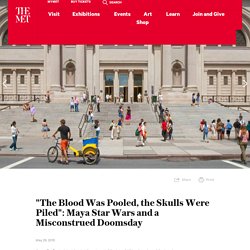
Stela fragment with glyphs, A.D. 669. Mexico, Mesoamerica, Tabasco. Maya. Limestone; H. 21 1/4 in. (54 cm). Jade in Ancient Costa Rica. Ainsworth, Maryan W., Denise Allen, Stijn Alsteens, Ian Alteveer, Joan Aruz, Peter Barnet, Andrea J.
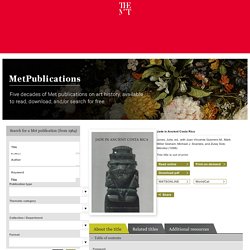
Bayer, Peter J. Bell, Deniz Beyazit, Monika Bincsik, Yaëlle Biro, Barbara D. A Rare Public Display of a 17th-Century Mayan Manuscript. When you take a close look at the flowery but meticulous lettering in the 17th-century book, you can see that many people wrote the script, at different times.
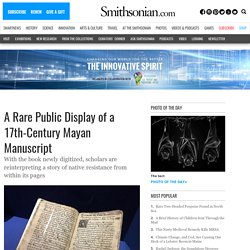
The book includes everything from sermons to poems, and there’s a dedication to Pope Urban IV. The Libro de Sermones Varios en Lengua Quiche, from 1690, is the oldest manuscript in the collection of the Smithsonian’s National Anthropological Archives. It provides not only a fascinating look at the evolution of the Maya K’iche’ language, but it also tells a stark tale of religious history. “When I see a document like this it just blows me away to see the care with which the language was put on paper by so many different people,” says Gabriela Pérez-Báez, curator of linguistics in the anthropology department at the National Museum of Natural History. She says the book is written in four different languages, including K’iche’, Latin, Spanish and Kaqchikel. “K’iche’ is a Mayan language which dates back several thousand years. Second largest Maya jade found in Belize has unique historical inscription. To say that UC San Diego archaeologist Geoffrey Braswell was surprised to discover a precious jewel in Nim Li Punit in southern Belize is something of an understatement.

"It was like finding the Hope Diamond in Peoria instead of New York," said Braswell, who led the dig that uncovered a large piece of carved jade once belonging to an ancient Maya king. En la selva Lacandona de Chiapas se encuentra la ciudad Maya de Bonampak, en ella se levantó el Templo de los Frescos, compuesto por tres cuartos independientes cuyas paredes y techos están totalmente decoradas con pinturas realizadas a fines del siglo VIII.
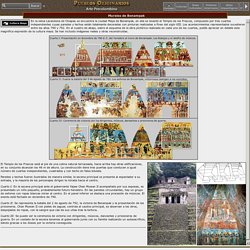
Los acontecimientos representados sucedieron entre los años 790 y 792. En el cuadro de abajo, sobre el esquema de la obra pictórica realizada en cada uno de los cuartos, podés apreciar en detalle esta magnifica expresión de la cultura maya. Se han incluido imágenes reales y otras reconstruidas. El Templo de los Frescos está al pie de una colina natural terraceada, hacia arriba hay otras edificaciones, en su conjunto alcanzan los 46 m de altura.
La construcción tiene tres puertas que conducen a igual número de cuartos independientes, cuadrados y con techo en falsa bóveda. The Red Queen and Her Sisters: Women of Power in Golden Kingdoms. Mask of the Red Queen, A.D. 672.
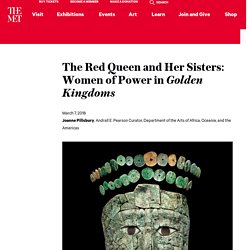
Mexico, Chiapas, Palenque, Temple XIII. Maya. Jadeite, malachite, shell, obsidian, limestone, H. 14 7/16 x W. 9 1/16 x D. 3 1/8 in. (36.7 x 23 x 8 cm). Museo de Sitio de Palenque "Alberto Ruz L'Huillier" (10-461006, 10-629739 0/39, 10-629740 5/55), Secretaría de Cultura—INAH Among the many recently discovered works presented in the exhibition Golden Kingdoms: Luxury and Legacy in the Ancient Americas are the spectacular ornaments and funerary objects that reveal the newly understood prominence of women of power in the ancient Americas. Lasers Reveal a Maya Civilization So Dense It Blew Experts’ Minds.